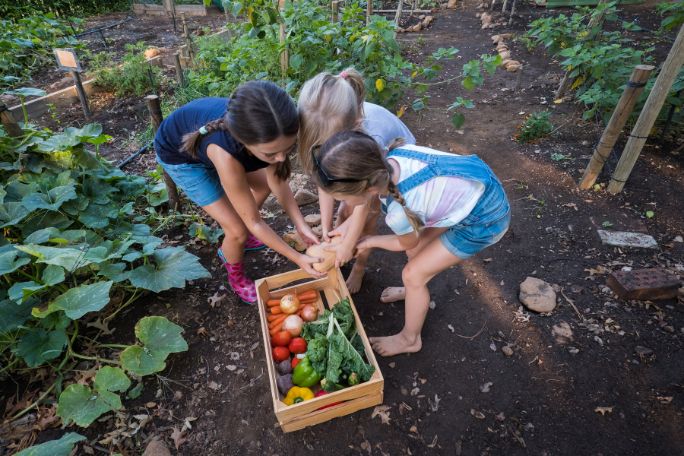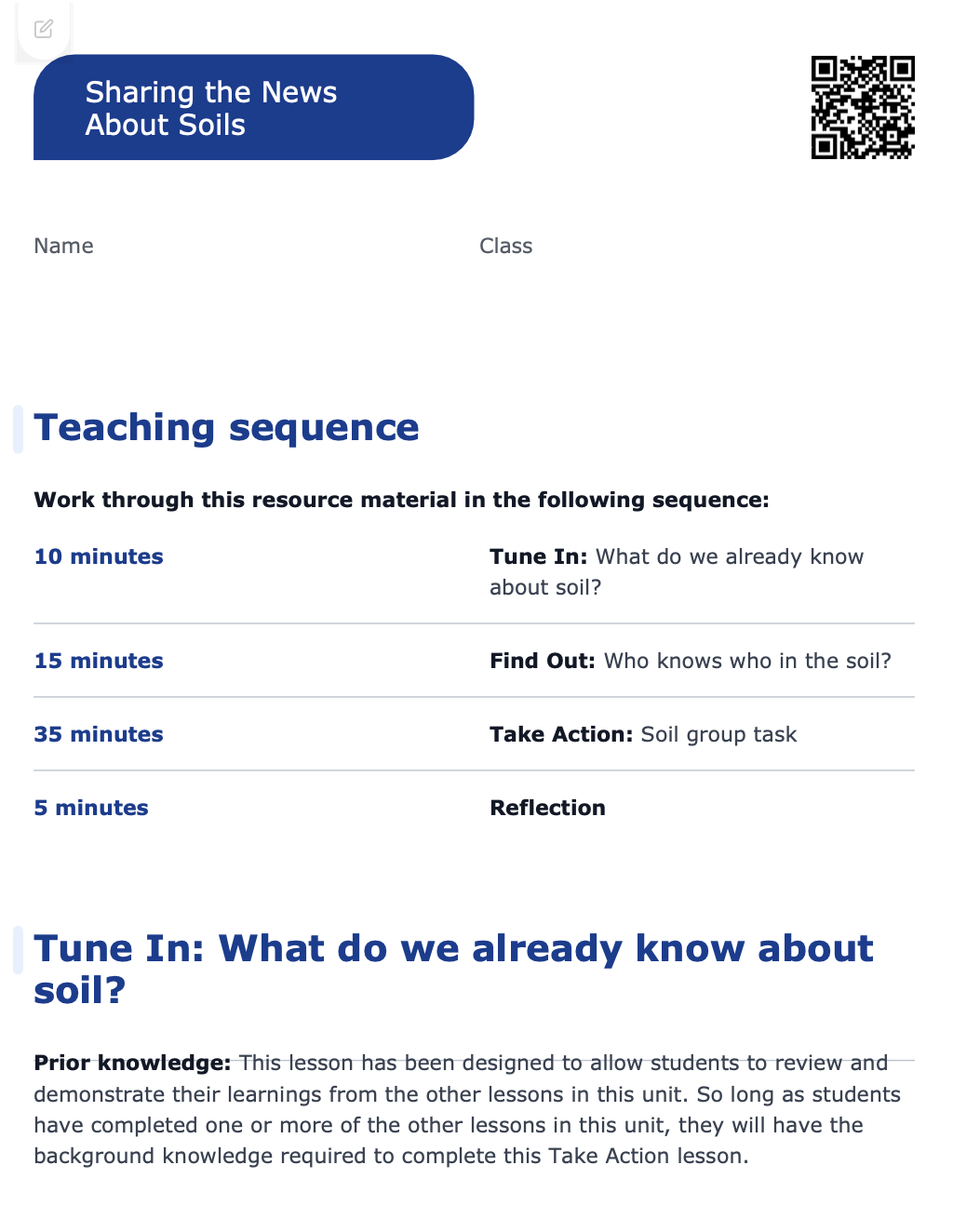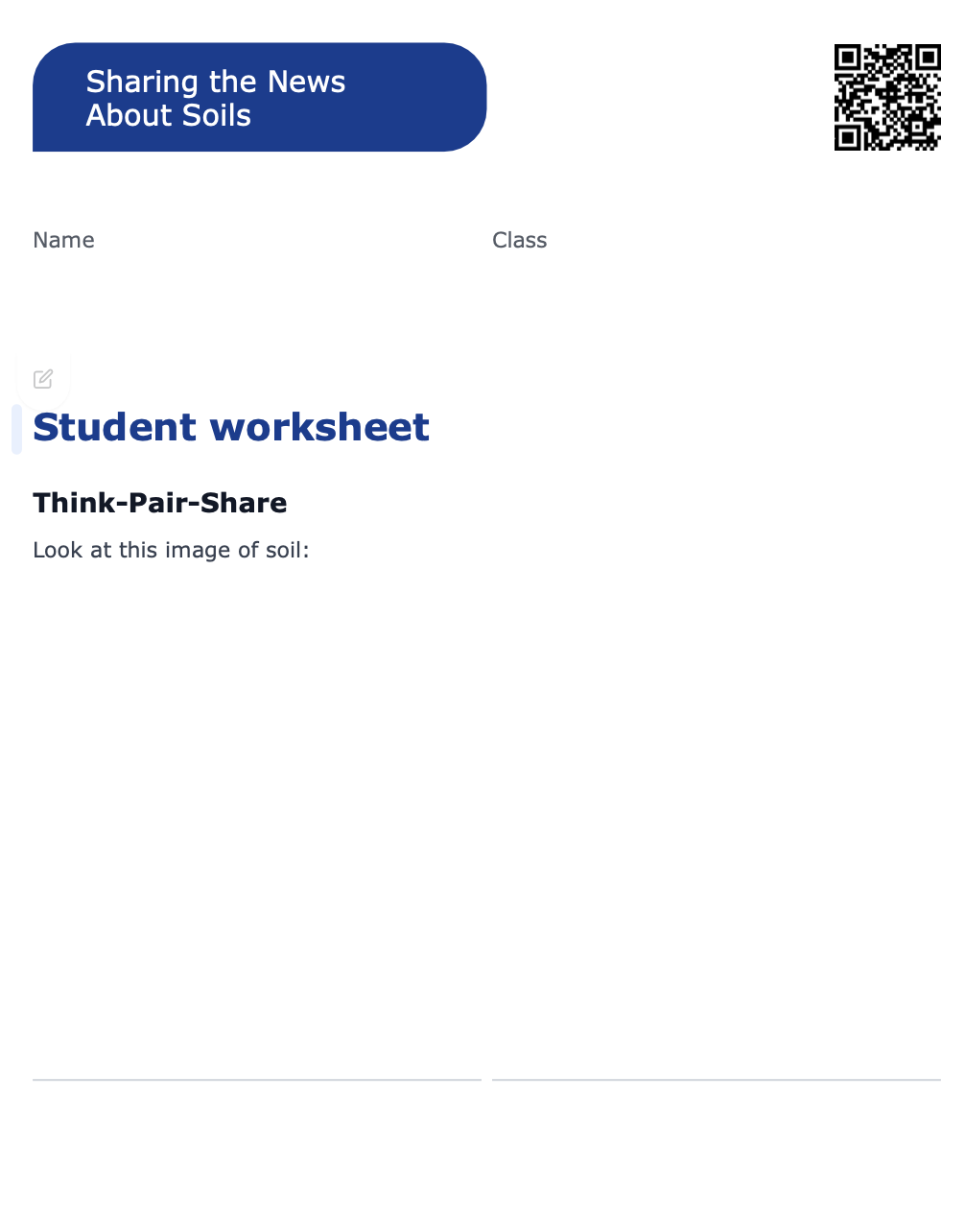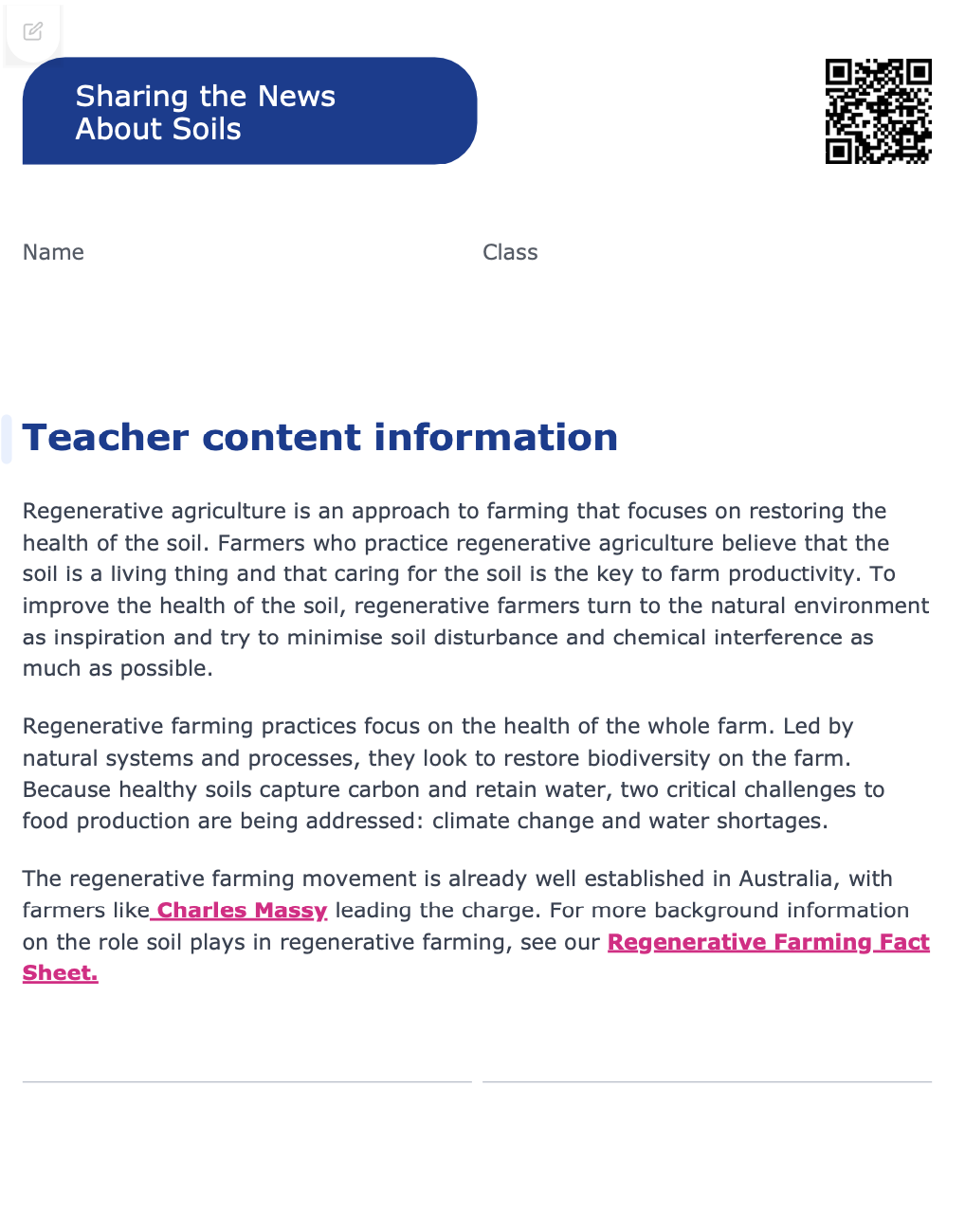Lesson summary
Students review their learnings about soil. They review their knowledge of soil and the living things within the soil and find out how some of these living things interact with each other. They then work together to create a work that communicates the importance of soil organisms to each other and the soil.
Learning intentions:
Students will...
- understand that soil is full of living things
- discover the ways that soil organisms interact with each other and the soil.
Success criteria:
Students can...
- describe and compare the features of soil organisms
- design and construct a class work to share messages about the importance of soil with an audience.
Lesson guides and printables
Curriculum links
Select your curriculum from the options below.
Lesson details
Skills
This lesson is designed to build students’ competencies in the following skills:
- collaboration
- creativity
- community engagement
- communication
- reflection
Curriculum Mapping
Content descriptions:
Australian Curriculum (v9.0) content descriptions - Year 3 Science
Students learn to:
- compare the observable properties of soils, rocks and minerals and investigate why they are important Earth resources (AC9S3U02)
- write and create texts to communicate findings and ideas for identified purposes and audiences, using scientific vocabulary and digital tools as appropriate (AC9S3I06)
General capabilities: Critical and creative thinking.
Cross-curriculum priority: Sustainability.
Relevant parts of Year 3 Science achievement standards:
They describe the observable properties of soils, rocks and minerals and describe their importance as resources. They communicate ideas and findings for an identified purpose, including using scientific vocabulary when appropriate.
UN Sustainable Development Goals
Target 2.4: By 2030, ensure sustainable food production systems and implement resilient agricultural practices that increase productivity and production, that help maintain ecosystems, that strengthen capacity for adaptation to climate change, extreme weather, drought, flooding and other disasters and that progressively improve land and soil quality.
Target 15.3: By 2030, combat desertification, restore degraded land and soil, including land affected by desertification, drought and floods, and strive to achieve a land degradation-neutral world.
Resources Required
- art-making materials
- Living soil image
- Soil organisms cards
Additional Info
Level of teacher scaffolding: Medium - oversee group activity and art-making task.
Special thanks to:

This lesson has been developed with the support of the Macdoch Foundation.
Cool's curriculum team continually reviews and refines our resources to be in line with changes to the Australian Curriculum.




Welcome back!
Don't have an account yet?
Log in with:
Create your free Cool.org account.
Many of our resources are free, with an option to upgrade to Cool+ for premium content.
Already have an account?
Sign up with:
By signing up you accept Cool.org's Terms and Conditions(Opens in new tab) and Privacy Policy(Opens in new tab).